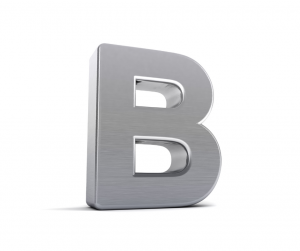Let’s explore the serious and lighter sides of organising with a wander through the alphabet with The A to Z of Organising.
Catch up on A is for here, and B is for here.
 In this article, I share what C is for…
In this article, I share what C is for…
Calm – Ask anyone who feels overwhelmed with clutter and too many things to do what they want to feel instead, and the answer will likely be “Calm”. How that is achieved is different for everyone. Some people will feel calm when they walk into a stark white room with no “stuff” on display. Others will feel that calm when they walk into a room with art on every wall and stacks of books on the coffee table. Calm comes from within, but it is certainly affected by what we surround ourselves with. And that includes people!
Chaos – A total lack of organisation or order.
Chronic Disorganisation – Chronic disorganisation is defined in Judith Kolberg’s book, What Every Professional Organizer Needs to Know About Chronic Disorganization, as a persistence of severe disorganisation over a long period of time, daily undermining of a person’s quality of life by disorganisation, and a history of failed self-help attempts. This is in contract to situational disorganisation which is a temporary lack of organisation, such as after a change in circumstances. A new baby, a new job, a new home can bring about situational disorganisation. There is good news about chronic disorganisation. A good professional organiser can help.
Clients – As an organiser, I couldn’t leave Clients off my A to Z of Organising list. They are, after all, the main reason I continue to learn about organising. Helping them get organised is a joy. What I’ve learned from my clients could fill a book. I’ve never met a client who wasn’t organised in at least one area of their life. I’ve never met a client who didn’t have clever and creative solutions of their own. I’ve never met a client who is exactly the same as another. That’s why we organisers create customised (another C word) solutions and systems for them.
Clutter – Everything in our lives, including physical items and tasks and even people, either adds value to our lives or detracts from us. Clutter is anything that detracts. The pair of jeans that no longer fit and make us feel bad because we spent money on something we can no longer use. That’s clutter. The stack of old magazines on the armchair that we have to move if someone comes to visit. That’s clutter. That task which we keep putting off because we just can’t face the thought of it, and it’s been on your to do list so long that you can’t remember why you actually agreed to do it. That’s clutter too.
Consistency – One of the best ways to get organised is to be consistent in the things that will make you organised. When you’re consistent about where you put your keys, you’ll always find them when you need them. When you’re consistent about a routine of doing the laundry, and completing the cycle of laundry, you’ll always have clean clothes ready to wear. Unfortunately, if you’re consistent about leaving the groceries on the bench instead of putting them away in your pantry, you will consistently have a cluttered bench.
Containers – Don’t you just love a good container? And they keep coming up with pretty and clever designs, don’t they? But whoa there, hang on a minute. Before you go buying up big on containers, or any kind of storage solution, there are some steps that come before. As organising expert Julie Morgenstern described in her book, Organizing from the Inside Out, there is an acronym – SPACE – to help you remember the process of decluttering and organising. Sort. Purge. Assign (a home). Containerise. Equalise (= maintenance). You can see that putting things in containers comes way after you have sorted items, purged the ones you don’t need, use or love, and then decided where something will live. It’s no use buying a lovely container for all the varieties of tea before you know where in the kitchen or pantry the tea will live. Many a time I have arrived to help someone declutter only to find that much of the clutter is made up of containers waiting for a use.
Cookbooks – Whether you love to cook, or you lack confidence to cook, it’s likely there will be cookbooks in your home. With recipes being so freely available at the touch of a keystroke, there’s an argument for eliminating cookbooks all together. But I admit there is something special about leafing through the pages of a book to get inspiration, so it’s not likely that hard copy cookbooks will be eliminated any time soon. The question is where to keep them in an organised way. Like anything else in our home, it’s best to set limits. And again, like anything else in our home, it’s best to keep cookbooks close to where you’ll use them. In my kitchen there is a shelf above the fridge that’s perfect for cookbooks. The size of the shelf determines the limit of how many I keep, and they are readily accessible.



